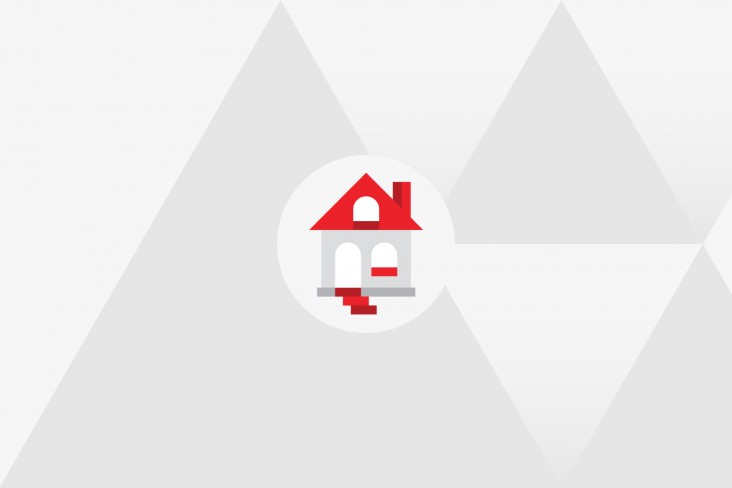Quite often, something will pop up on the legal or general news radar that casts me into “I wonder” mode … promptly sparking a Google-fest of searching and cross-referencing to satiate my curiosity.
I’ve been both a landlord and a tenant, so when the significant changes to the Residential Tenancies Act came in last year, it got me to thinking: just how many of us do actually rely on rentals, as opposed to living in our own home? After all, as a nation, we’re equally as renowned for our penchant for residential property investment as we are for our “quarter-acre dream” culture.
The answer, according to the latest 2013 census information from Statistics New Zealand is … 453,135 households are rentals – up from 388,275 in 2006. Given the census tells us New Zealand housed just over 1.56 million “occupied private dwellings” in total at the time, the reliance on rentals is sizeable. And, in our parts, with the high cost of real estate and the seasonal, itinerant workforce, chances are the number of local households that have a rented roof over their heads is likely even greater than other areas.
Janice’s Lesson Number 1: Whichever side of the renting divide you dwell, if it’s as a landlord or as a tenant, you really do need to be up with the play on last year’s changes to the Act. Both the owner and the renter face new obligations.
Drier, safer, healthier
These laws are anchored in the Government’s push to make rental homes drier, healthier and safer – and a pretty simple, cost-effective tool to immediately boost household protection is the trusty smoke alarm. While no-one doubts the life-saving merits of the detectors, the challenge in rental houses up to now has been: who’s responsible for, firstly, providing them, and, secondly, maintaining them? The amendments to the Act spell out the responsibilities.
Janice’s Lesson Number 2: Listen up, landlords. Does your rental property have working smoke alarms properly installed within three metres of every bedroom or anywhere else people sleep? If not, you’re now officially breaking the law.
From hereon, if a smoke alarm needs to be installed or replaced, it must feature a photoelectric sensor and be powered by long-life batteries. The rules allow for hard-wired alarms. Tenants – it’s vital to note, you have responsibilities around this one, too. The onus is on you to test and replace any worn-out batteries, and also to notify your landlord if any smoke alarm is defective.
I’d have to say, though, landlords, I’d be tending to include a smoke alarm test on my checklist at regular inspections. Better safe than sorry.
Arguably the biggest change, however, is around insulation. It’s no secret the numbers of homes in New Zealand with non-existent or substandard insulation is abysmal, and lies at the heart of a range of dismal statistics demonstrating the flow-on adverse health effects.
Janice’s Lesson Number 3: Under the new laws, all residential rental houses must be insulated to keep the home warm in winter and cool in summer. And, the Government has decreed some specifics: wherever practicable, both the ceiling and underfloor spaces must be insulated. This must be done in accordance with the Building Act, which calls for homes to be better insulated in colder areas – not surprisingly, we’re categorised as “zone 3”, the chilliest, and require a much higher level of insulation than those in warmer climes.
While, rentals with income-related rents (social housing) were required by law to have had the insulation work done by July 1, private landlords have been given a three-year period of grace.
Now, July 1, 2019, might seem somewhere near the never-never, but here are a couple of potentially sobering reality checks. Numero uno: the cost. Insulating ceiling and underfloor spaces does not come cheap. You might want to start squirreling away some of that rent sooner rather than later. Figures being bandied about indicate the average cost of a retrofit sits around the $4000 mark. Oh, and that’s based on a rather teensy 96sqm home.
Don’t be late to insulate
Second up: demand. Given the number of rentals that’ll need seeing to, insulators are going to be a hot commodity, I imagine. Leave it too far into the grace period, and you might just find everyone’s booked and you miss the deadline, fall foul of the law and get pinged $4000 by way of a fine.
Janice’s Lesson Number 4: You may need to give your tenancy agreements a bit of a tickle up, too – since July 1, 2106, it has been incumbent on landlords to provide a declaration about the location, type and state of insulation in a rental property.
As well as banning all conductive foil insulation, the law changes also tidy up a couple of key areas around the dispute resolution process, including offering tenants more protection from landlords retaliating in the face of a complaint to the Tenancy Tribunal, and also paving the way for properties to be let more expeditiously in cases of tenancy abandonment.
School yourself up
As a landlord, failing to put proper processes and checks and balances in place can prove costly, messy and stressful. If you don’t have a professional property manager overseeing your investment, book an appointment with your lawyer. To protect your property and stay on the right side of the law, you really do need to take responsibility for not just ensuring you’re up to speed with these latest legal changes, but satisfying yourself you understand, and are adhering to, the many other obligations and duties you shoulder as a landlord.
Last updated 4 March 2017

